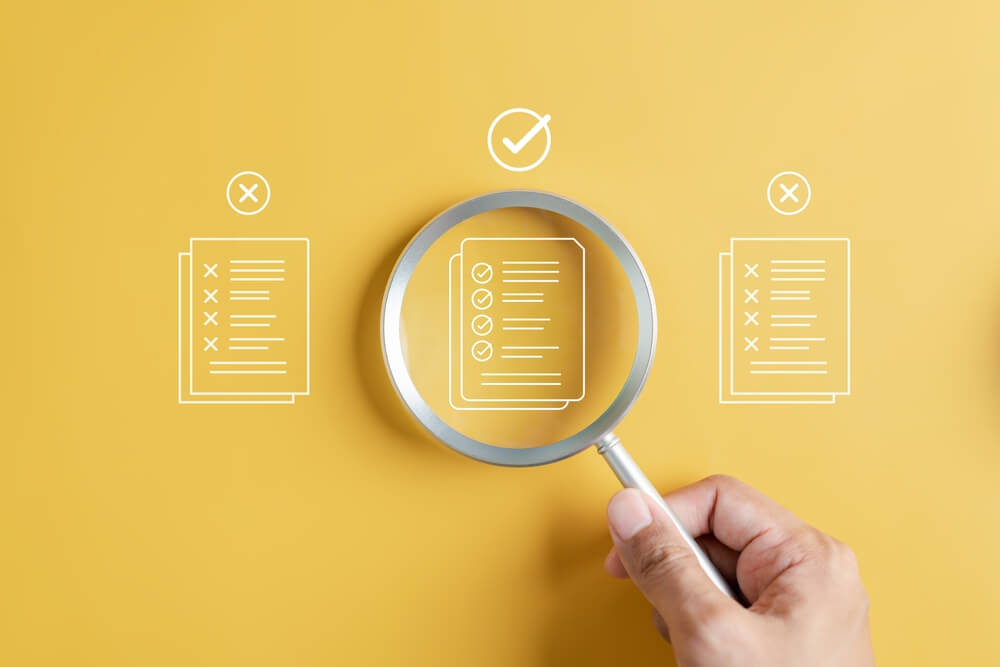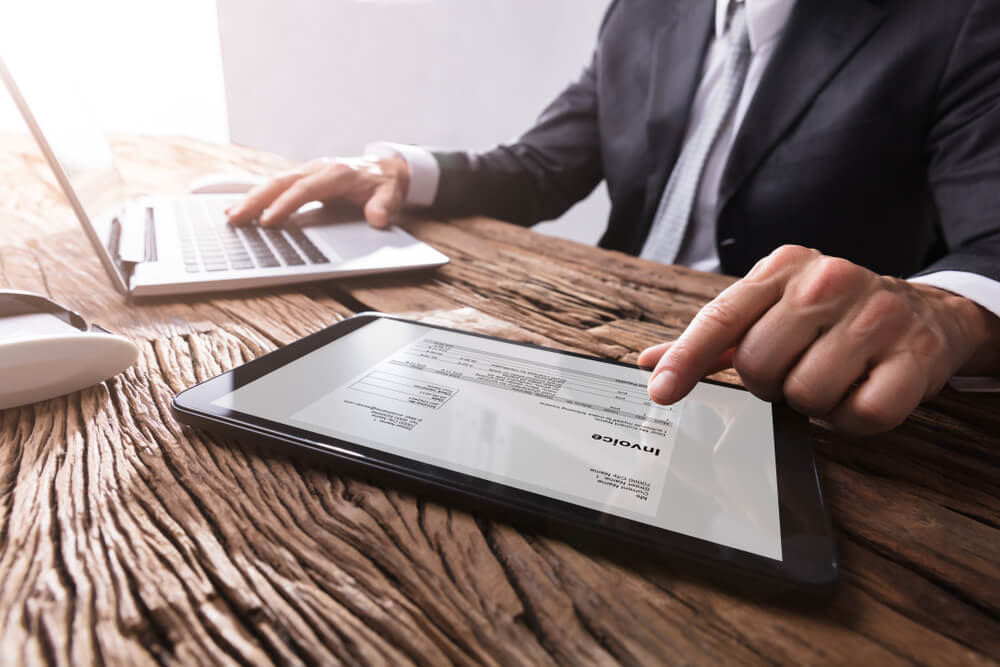Sending electronic checks, commonly known as e-checks, has become a prevalent method for transferring funds through online banking systems. These digital counterparts to traditional paper checks offer a secure, efficient, and speedy way to move money between accounts. In this detailed guide, the team at Check Issuing aims to provide insights into e-checks and their workings and a step-by-step tutorial on how to send an electronic check online.
Understanding E-Checks: Using Checks Online
Various names, including electronic checks or digital checks, often refer to an e-check. It functions similarly to paper checks in that it facilitates the transfer of money from one bank account to another, but the crucial difference is that e-checks are processed electronically. In the United States, e-checks are predominantly transmitted through the Automated Clearing House (ACH) network.
The concept is simple: when you make a payment via an e-check, funds are debited from your bank account and credited to the recipient’s bank account. Various methods can be used to authorize this payment, such as filling out an online form or signing a contract.
The Timing of E-Check Payments
It’s essential to note that while e-check payments are initiated online, they might take longer to process compared to other digital payment methods like PayPal, Stripe, or Google Pay. This delay in processing is due to the necessity of routing e-checks through the ACH network, and as a result, e-checks may take several business days to clear.
Sending Checks Online
Step-by-Step Let’s delve into the steps to send an e-check:
Step 1: Sign Up for an E-Check Service
You have several options to initiate e-check payments, including online payment processors offered by platforms like Square and Shopify. Most payment platforms provide digital bank transfer options. Additionally, many banks offer e-check services, but you should verify if this service is available and, if necessary, sign up for it. For a seamless online shopping experience, services like PayPal, which are linked to your bank account, can automatically convert funds into e-checks for your convenience. However, reviewing fees, terms, and processing times is crucial, as these can vary between providers.
Step 2: Provide Payment Details
If you opt for an e-check, you may need to establish a registered ACH merchant account, particularly in the United States. This typically involves supplying information about your transaction processing volumes, business years, and tax identification number.
Step 3: Authorize the Payment
Ensuring security should be of utmost concern when dispatching e-checks. Notably, e-checks are less susceptible to disputes from a merchant’s perspective. However, from the payer’s standpoint, it’s imperative to verify the proper authorization of the transaction by completing any requisite online forms or contracts during the purchase process. The only situation in which the transfer may be subject to dispute later is if the payment hasn’t been duly authorized. From a security perspective, it’s essential to guarantee that your banking information is submitted through a reputable payment processor. Some merchants and nonprofit organizations may establish connections with third-party apps or employ email links, so it’s always advisable to confirm that the connection is secure.
To sum up, there are various approaches to facilitate online bank transfers. While e-checks might not be the most prevalent option, it’s vital to acknowledge that they offer a dependable and secure means of processing payments, even though they involve a somewhat lengthier processing period.
E-Checks: A Deeper Dive What Is an Electronic Check?
The term e-check, short for electronic check, is a digital payment method originating from any checking account. It operates similarly to a traditional paper check, with one key difference: instead of physically writing a paper check, you give the necessary payment information electronically. This typically includes your routing number, bank account number, and payment authorization, all of which are submitted through an e-check authorization form, initiating electronic processing.
How E-Checks Are Handled
E-checks undergo processing within the Automated Clearing House (ACH) network, the foundational framework for digital financial transactions among U.S. financial institutions. This ACH network essentially functions as a digital expressway for the electronic transfer of funds, with e-checks functioning as one of the modes of transportation along this route.
E-checks significantly expedite their journey compared to traditional paper checks since they circumvent the additional steps involved in verifying and processing paper-based payments. In a typical paper check scenario, the recipient’s bank must initially authenticate the check’s validity before transmitting it to the issuing bank for further scrutiny. This entire process can be quite time-consuming.
In contrast, e-checks expedite the payment process. The payer initiates the payment by providing bank account information, which is then used for electronic processing. Here’s an example of how merchants can collect payments through e-checks:
Customer Authorization
When a customer elects to pay for products or services using an e-check, they grant consent for a digital payment or electronic money transfer between their bank account and the merchant’s bank account. Merchants can secure this authorization through diverse methods, including a signed contract, an authorization form, or an order form.
Payment Details
To process the payment, the merchant needs to collect all the essential payment information, including the customer’s bank account details. In the case of recurring payments, additional information related to the payment schedule is gathered.
Payment Processor Verification
The transaction must pass validation with the merchant’s payment processor. Verification ensures that the customer’s information matches their bank account and that the account holds sufficient funds for the transaction. These checks are conducted to confirm the legitimacy of the transaction. For businesses using point-of-sale systems, customer-entered data can be sent directly to the merchant’s e-check terminal for instant verification and processing.
Funds Transfer
The funds from e-checks are transferred via the ACH network, moving from the customer’s account to the merchant’s account. It’s worth emphasizing that while e-checks consistently utilize the ACH network for processing, it’s essential to recognize that not all ACH payments equate to e-checks. The fees and processing channels can vary depending on the specific ACH utilization. E-check fund processing operates in batches, so it’s not an immediate procedure. Generally, it takes approximately two to three business days for the funds to reflect in the recipient’s account.
E-Checks vs. Credit Cards
At a surface level, there is no functional difference between e-checks and credit cards as payment methods; both are valid ways to pay for goods and services. The key differences lie in the processing mechanisms behind these payment methods:
E-Checks
E-checks are processed through the ACH network, which is widely used and generally entails lower processing fees than credit cards. E-checks do not incur credit card interchange fees, and the cost per transaction can be as low as 10 cents. This can result in significant cost savings for businesses processing a high volume of transactions.
Credit Cards
Credit card payments rely on private payment processing infrastructure maintained by credit card companies. These networks are exclusive to each credit card and often entail higher fees. Credit card payments allow for transactions even when the payer lacks the necessary funds at the time of the transaction.
Advantages of E-Checks/Sending Checks Online
E-checks offer various advantages, making them an appealing payment method:
Speed:
E-checks expedite the payment process compared to traditional paper checks. While they may still take a few days to finalize, the processing time is significantly reduced, allowing businesses to receive funds more quickly.
Security
E-checks are intangible, reducing the risk of loss or misplacement. The process is highly secure, with multiple layers of security, including authentication, digital signatures, duplicate detection, encryption, and certificate authorities to safeguard against fraud.
In summary, e-checks have modernized the traditional paper check system, streamlining the payment process for all parties involved. Customers benefit from easier payments, businesses receive funds more promptly, and much of the bank authentication process is automated.
Sending an E-Check An e-check presents a method of electronic payment that empowers you to transmit funds directly from your bank account to the bank account of your chosen recipient. To initiate an e-check, you’ll need the essential recipient’s bank details, encompassing their checking account’s routing and account numbers. Simultaneously, you must possess your bank account particulars. With this information in your possession, adhere to these steps to dispatch an e-check:
- Access your bank’s website or app.
- Commence the e-check payment.
- Input the recipient’s bank account information.
- Specify the amount you intend to transfer.
- Finalize the payment.
Subsequently, the funds will be electronically conveyed from your bank account to the recipient’s bank account.
Is It Secure to Utilize E-Checks?
Undoubtedly, employing and acknowledging e-checks is a secure endeavor. E-checks provide a dependable and convenient manner to execute online payments, boasting the same level of security as conventional paper checks. When you execute an e-check payment, the transaction is electronically dispatched from your bank account to the recipient’s bank account. The transfer of funds is executed using identical security measures that banks employ for other transaction types, thereby safeguarding the integrity and safety of your payment.
In summation, e-checks serve as a trustworthy and secure mode for both making payments and receiving them. This ensures convenience and peace of mind for both payers and recipients.
Concluding Thoughts
E-checks are a valuable addition to the array of digital payment methods available today. As a secure, efficient, and cost-effective option, e-checks streamline the payment process, benefiting businesses and individuals alike. While they may not be as well-known as credit cards or digital payment platforms, e-checks present a viable alternative that’s worth considering. By following the steps outlined in this guide, you can confidently send e-checks and enjoy their convenience and security.
And if you happen to have any more questions, feel free to reach out to us.








